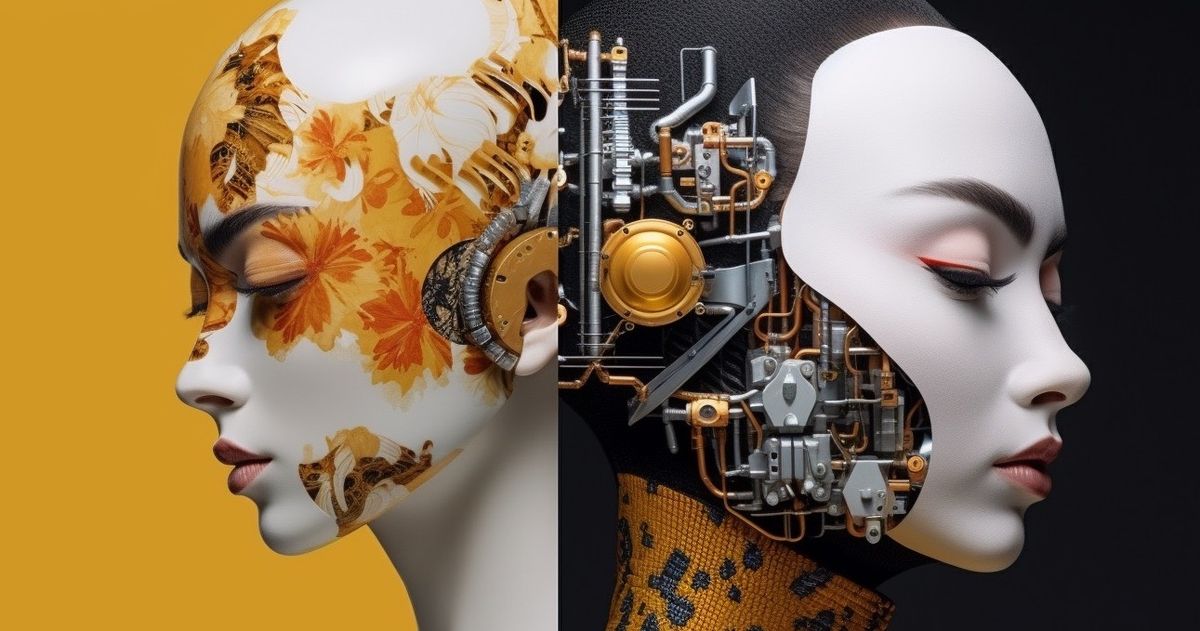AI: Unmasking the Human Creativity Behind AI

Introduction
In today's tech-savvy world, Artificial Intelligence (AI) often garners attention for its astonishing capabilities, from generating creative content to engaging in natural conversations. Yet, beneath the surface of AI's apparent intelligence lies a truth that's often overlooked – these systems are products of human ingenuity and creativity rather than genuine intelligence. In this blog, we'll delve into the intricacies of AI, shedding light on how human creativity fuels their capabilities and why the Turing test, often misinterpreted, underscores the illusion of AI's intelligence.
The Mirage of AI Intelligence
While AI systems might make us feel like they possess a form of genuine intelligence, they are essentially designed to replicate human-like behaviors and responses. This imitation can be strikingly convincing, leading us to attribute real understanding and intellect to these machines. However, the driving force behind these impressive feats is not some magical cognitive spark but rather the skillful engineering and programming by human hands.
The Turing Test: Misunderstood and Misinterpreted
Alan Turing's Turing test, proposed in 1950, set a benchmark for evaluating machine intelligence. The idea was simple: if a machine can engage in a conversation that is indistinguishable from that of a human, it can be deemed intelligent. However, as time has shown, passing the Turing test does not equate to genuine intelligence. The test essentially measures the AI's ability to mimic human conversation to such an extent that it can fool a human evaluator. In other words, it's about creating the illusion of human-like responses, not true understanding or consciousness.
Human Creativity: The Driving Force
Behind every AI's impressive performance lies the intricate craftsmanship of human creativity. Developers write the algorithms, design the neural networks, and curate the datasets that shape an AI's abilities. These systems are born from the fusion of mathematics, coding, and human insight, all carefully orchestrated to make them appear as though they possess independent intelligence. The creative decisions made during the development process determine an AI's strengths and weaknesses, its biases, and even its ethical considerations.
Data Dependency: AI as a Reflection of Society
AI's dependency on data highlights another aspect of their non-genuine intelligence. Language models like GPT-3 generate text based on the vast amounts of text data they've ingested, which includes both the brilliance and the biases of human language. This data dependency essentially turns AI into a mirror of our own inputs, revealing societal norms, cultural biases, and human limitations rather than exhibiting autonomous understanding.
The Illusion of Agency
The perception of AI having agency is another layer of the illusion. When AI systems provide what seems to be thoughtful and personalized responses, it's easy to attribute intentionality to them. However, these responses are the product of complex algorithms analyzing data patterns and selecting predefined responses, rather than a result of genuine thought or decision-making.
Conclusion
In the ongoing saga of AI development, it's imperative to remember that what we perceive as intelligence is often an intricate illusion. AI's feats are the outcome of human creativity, programming, and design, rather than evidence of sentient thinking. The Turing test, a yardstick often misunderstood, underscores this illusion by gauging the extent to which machines can create the façade of humanity. While AI undoubtedly has the potential to revolutionize industries and improve our lives, recognizing the boundaries of its capabilities is paramount to maintain a clear distinction between the remarkable power of human creativity and the true depths of intelligence that remain uniquely human.
PostScript:
The above was written by ChatGPT 4. I did this as an experiment, but in fact ChatGPT managed to touch on every point that I wanted to make, especially the Turing test. I asked it to make some subtle changes to emphasis the illusion of person-hood behind the Turing test; which is to say that Turing didn't say that the system was intelligent, just that it presented the illusion of intelligence/person-hood adequately to fool a human under very specific conditions.
Owen Godfrey